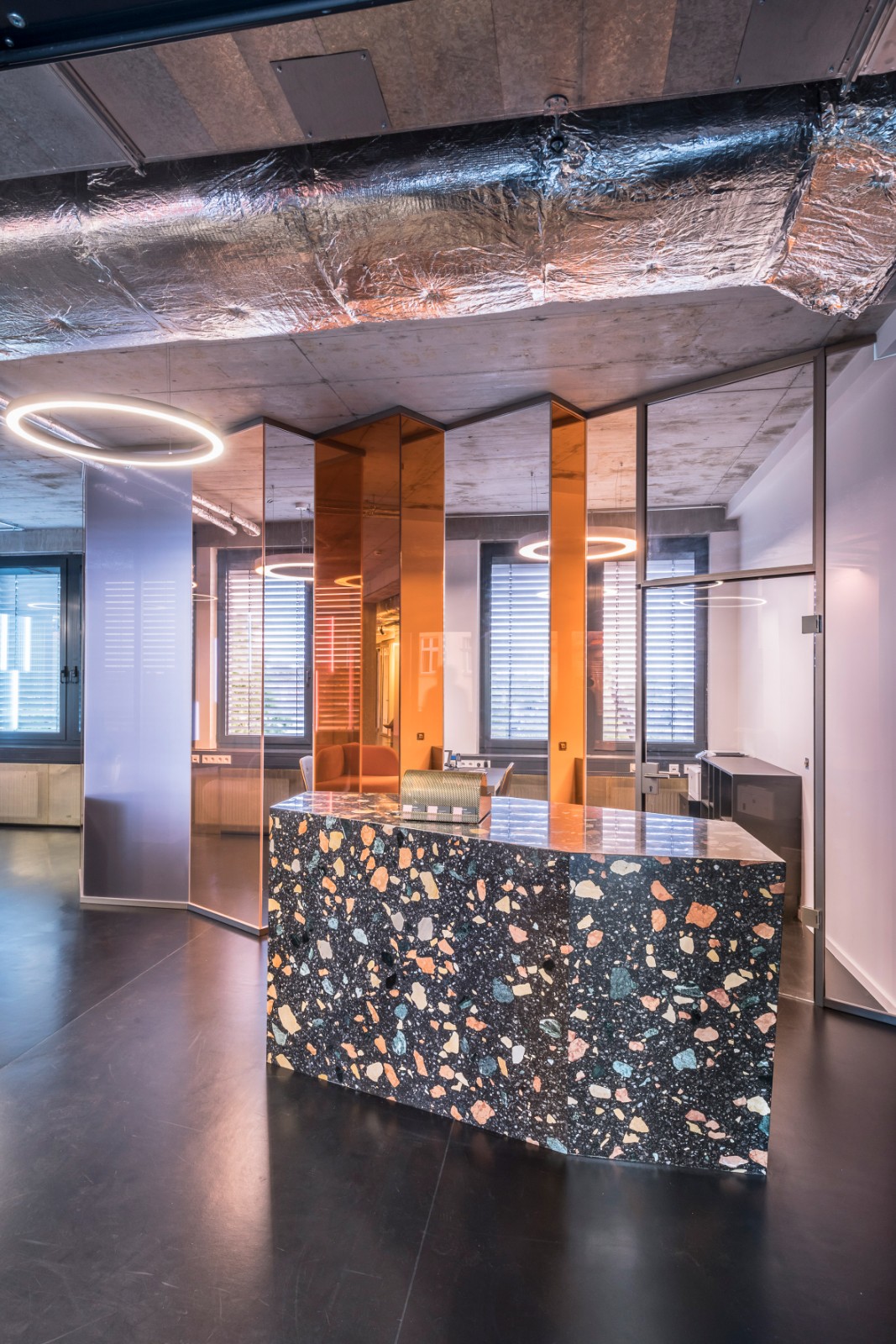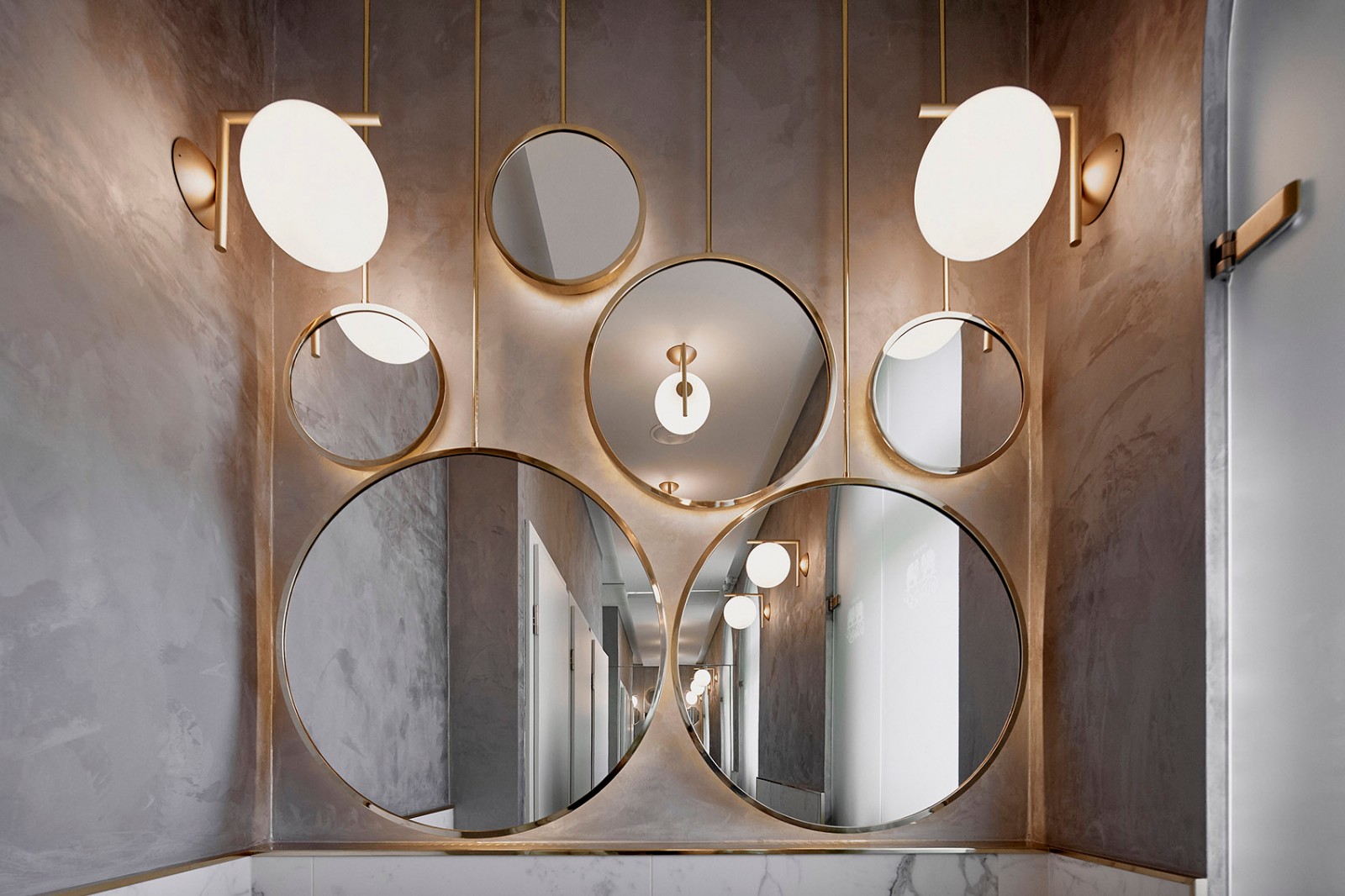ZCB Zero Carbon Building Ronald Lu and Partners
2012-10-18 01:00
架构师提供的文本描述。ZCB是香港第一座零碳建筑。采用以能源需求控制为主的能源层次结构。被动设计与气候反应的建筑形式,方向,布局和围护加强自然通风,采光和太阳能遮阳。宽敞的入口走廊是面向和充分开放的流行夏季微风,并提供了一个舒适的环境,收集和临时展览,无需使用空调。采用优化的窗墙比、南立面深挂、外遮阳翅片、尽量减少东西立面/窗、高性能玻璃化系统、遮阳保温屋面,实现了11W/m2的超低OTTV。这些被动式设计措施,与现时建造业的基准比较,预计可减少20%的能耗。采用高能效的主动系统,如高容量低速风机、高温冷却系统、配合智能控制,可进一步降低能源的潜在需求25%。ZCB的目标是“能源加”,这超出了传统的碳中和范围,每年生产的能源超过其自身的需求,以抵消其建筑过程和主要结构材料的碳含量。采用生物柴油三代和光伏技术进行现场可再生能源发电.
Text description provided by the architects. ZCB is the first zero carbon building in Hong Kong. Energy hierarchy with its priority on energy demand control is adopted. Passive design with climate-responsive built form, orientation, layout and envelope enhance natural ventilation, daylighting and solar shading. The spacious entrance hallway is orientated and fully opened to the prevailing summer breeze, and provides a comfortable setting for gathering and temporary exhibition without the use of air-conditioning. An ultra-low OTTV of 11 W/m2 is achieved mainly due to optimized window-to-wall ratio, deep overhang over the south facade, external shading fins, minimized east and west facades / windows, high performance glazing system, and shaded and insulated roof. These passive design measures are expected to reduce energy consumption by 20% as compared to the current building industry benchmark. The use of highly energy-efficient active systems like high-volume-low-speed fans, high temperature cooling system, coupling with smart control can further reduce the potential energy demand by 25%. The ZCB targets “Energy Plus” which goes beyond conventional scope of carbon neutrality by producing more energy than its own needs over an annual basis, to offset the embodied carbon of its construction process and major structural materials. On-site renewable energy generation by bio-diesel tri-generation and state-of-the-art photovoltaic (PV) technologies is adopted.
生态效率是以高环境质量和最小化负荷为目标的关键设计理念.采用绿色、清洁和精益的设计和施工方法,重点是节约资源,减少材料和废物(例如,白面混凝土、未涂油漆的金属工厂)。平衡切割和填塞场地的形成,引入了庇护广场和绿色梯田与周围形成的护堤和树木。将来自降级工程的建筑碎片用作护堤周围石灰石种植墙的填充物,没有造成出口废物的环境负荷。区域制造的生态摊铺机将通过其钛氧化物涂层吸收空气污染物,并且不需要大量的能量来运输这些材料。采用高PFA含量的钢筋混凝土,最大限度地减少了结构的碳足迹。在生命周期碳足迹评估中,特别是在降低运营能源需求的情况下,对材料和建筑材料碳含量的考虑显得尤为重要。
Eco-efficiency is the key design concept which targets for high environmental quality and minimized loading. Green, clean and lean design and construction approach with an emphasis on resource conservation for less material and less waste (e.g. fair-faced concrete, unpainted metal works) has been adopted. Balanced cut and fill for site formation introduces sheltered plaza and green terraces with surrounding formed berms and trees. The construction debris savaged from demotion works were used as infill for the gabion planter walls around the berms, and no environmental loading of exporting the waste was resulted. Regionally manufactured eco-pavers would absorb air pollutants by their titanium oxide coating and did not require high embodied energy for transportation of the materials. Reinforced concrete with high PFA content was used to minimize the carbon footprint of the structure. Consideration for embodied carbon of the materials and construction becomes more important in the life cycle carbon footprint assessment in particular when the operational energy demand is reduced.
为了评价和优化ZCB的建筑环境性能和运行,提供了一个自定义开发的BEPAD(BuildingEnvironment PerformancePerformanceDashboard)系统。该系统作为图形用户界面(GUI),用于交互式显示建筑物环境性能的实时数据和跟踪记录,由建筑物管理系统(BMS)使用建筑物中的2 800多个感测点进行监测。展示了以下6类建筑环境性能:能源利用(EU)、场地(SA)、室内环境质量(IEQ)、材料(MA)、用水(Wu)和占用数据(OC)。在现场安装了四个室外气象站,以收集小气候数据,以了解和优化建筑服务系统的性能。
To evaluate and optimize ZCB’s building environmental performance and operation, a custom-developed BEPAD (Building Environmental Performance Assessment Dashboard) system is provided. The system acts as a graphical user interface (GUI) for interactive display of real-time data and track records of building environmental performances as monitored by the BMS (Building Management System) using over 2,800 sensing points in the building. Building environmental performances of the following 6 categories are displayed: energy use (EU), site aspects (SA), indoor environmental quality (IEQ), material aspects (MA), water use (WU) and occupancy data (OC). Four outdoor weather stations have been installed within the site to collect microclimatic data that will inform and optimize the performances of building services systems.
 举报
举报
别默默的看了,快登录帮我评论一下吧!:)
注册
登录
更多评论
相关文章
-

描边风设计中,最容易犯的8种问题分析
2018年走过了四分之一,LOGO设计趋势也清晰了LOGO设计
-

描边风设计中,最容易犯的8种问题分析
2018年走过了四分之一,LOGO设计趋势也清晰了LOGO设计
-

描边风设计中,最容易犯的8种问题分析
2018年走过了四分之一,LOGO设计趋势也清晰了LOGO设计


















































